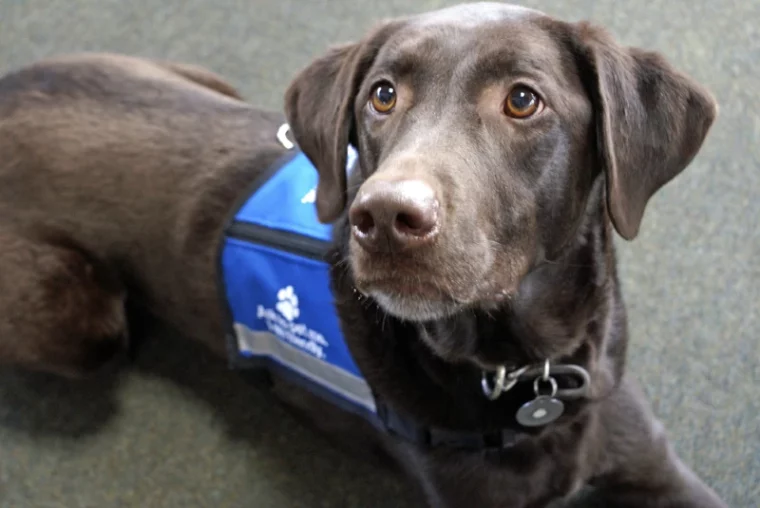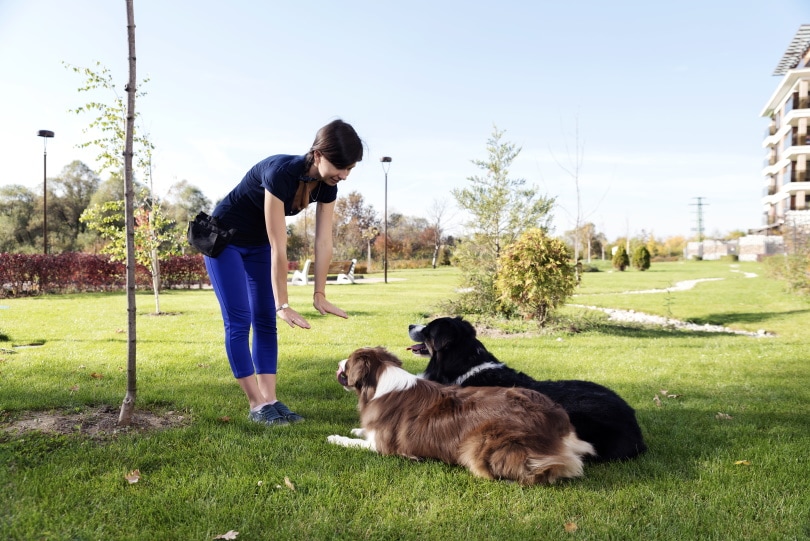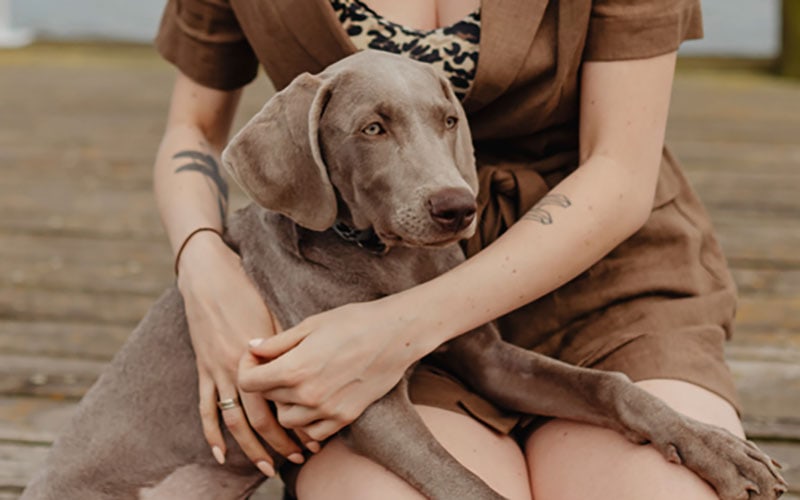
Dogs have been man’s best friend for over 10,000 years, wearing a great many hats in their time: hunter, protector, pest control, shepherd, and more. One of the most important canine jobs still around is the famous guide dog. Trained to help visually impaired people avoid obstacles, safely traverse the world, and assist with everyday tasks, there’s much more to guide dogs than meets the eye.
If you’ve ever wondered about what guide dogs do, where they come from, what breeds are used, or how they’re trained, look no further than this article. Join us down below as we answer those questions and explore the world of guide dogs.
The 8 Facts About Guide Dogs
1. They Have a Long History
The oldest evidence of blind people using dogs as guides dates back to a 1st-century mural in the Roman city Herculaneum, which was buried along with Pompeii in the year 79 AD. Originally discovered back in the early 18th century, Herculaneum contained a treasure trove of history we’re still discovering today.
Among that trove is a very distinct mural of a blind man being led by a dog on a leash-like lead.
Another ancient piece of evidence of guide dogs is a 13th-century scroll from ancient China, depicting an apparently blind man with a cane being led by a dog. We have wood carvings from the Middle Ages too, but the first attempt to deliberately breed guide dogs was in “Les Quinze-Vingts,” a Parisian hospital specializing in blindness.
Still, it wouldn’t be until the 20th century that guide dogs really took off. A German doctor, Dr. Gerhard Stalling, was allegedly visiting WWI veterans permanently blinded by chemical weapons when he conceived of a systematic program to breed trained dogs to assist the veterans with acclimating to postwar life.

2. Some Breeds Are Better Guide Dogs Than Others
You’ve probably noticed that some dog breeds are used as guide dogs more often than others. The Golden Retriever is a popular choice for their innate friendliness, intelligence, and athleticism, but they’re not the only breed used. Labrador Retrievers are more loyal and food-motivated dogs, not to mention larger than Goldens on average. Some other breeds used as guide dogs are German Shepherds, Poodles, and Border Collies.
There are several key traits that make a good guide dog, which we’ll break down for you below, along with why each trait is valuable.
3. Guide Dogs Cost a Pretty Penny to Train
From the costs of medical care to their extensive training, guide dogs cost a lot to raise before they’re matched with their owner—$40,000 to $50,000, to be more specific. Guide dog facilities typically have their own breeding programs with stringent, exacting standards for future guide dogs. They receive meticulous, thorough medical screenings and vaccinations, and they’re almost always neutered or spayed before they’re paired with a disabled person.
Guide dogs learn essentials like housetraining and obedience first while being carefully socialized, then they move on to more thorough service animal training for about 6 months. Meanwhile, they’re observed for any undesirable traits like disobedience or distractibility that could make them unsuitable for life as a service dog.

4. Guide Dogs Get Special Treatment
The Americans with Disabilities Act, or the ADA for short, legally established that service animals, including guide dogs, are allowed in locations that otherwise prohibit pets. Restaurants and grocery stores, for example, are required to allow service animals and their handlers in the store. By law, they’re only allowed to ask two questions.
Those are:
That means they legally can’t ask you about anything else. For instance, they can’t ask what disability you have or ask for any other details about your dog. If they do, you’re legally allowed to ignore the questions and resume what you’re doing. Many service animal handlers opt to buy their dog a special harness that clearly marks them as a service animal. You’re not legally required to have one or even furnish proof that your guide dog is a bona fide service animal.
5. They Can Retire
Guide dogs can faithfully serve their disabled partners for many years but typically retire around 10 years old. That’s the age many big dogs used as guide dogs develop painful arthritic conditions like hip or elbow dysplasia, but it can vary case by case. Let’s briefly list some other reasons a guide dog might need to retire from service so you can get a better idea.
Guide dog organizations prefer to rehome retired guide dogs with people they know, like those involved in their training or medical care. In cases where the dog can’t physically work as a service animal but is still eager to work, they sometimes find a new lease on life as a therapy or emotional support animal.

6. Guide Dogs Can Recognize & Disobey Dangerous Commands
Guide dogs are not only trained to obey their owner but to identify when commands are dangerous and willfully disobey them. For example, guide dogs are trained to stop at traffic lights and intersections until they receive your signal to move. Normally they’d obey without question, but if they can see traffic still moving, they’ll refuse to move. In a nutshell, guide dogs can analyze situations and factor in whether it’s safe to follow your commands before doing so.
7. There’s a Rigorous Matching Process
You can’t just pluck any old dog off the street and make them a guide dog, nor can you just take any old guide dog. Before you’re paired up with your perfect guide dog, you’ll have the chance to meet with several dogs during the matching process. The organization you’re working with will interview you and take into account your lifestyle, level of physical activity, disability, and the types of tasks you need assistance with. The dog’s individual personality is important too, as you’ll want to match with a dog you can see yourself bonding with long-term.

8. You Need to Respect Their Boundaries in Public
Guide dogs are literally on the job when they’re out and about in public with their owners. That means you shouldn’t walk up to them to pet them or say hi, even if it’s a nice gesture. They’re constantly on the lookout for obstacles and environmental hazards, and distracting them for a moment can be dangerous. While they take off their harness and frolic like any dog, in public with their owners is not the time to engage with them.
Conclusion
Guide dogs help the visually impaired lead normal lives while staying safe from all the obstacles out there you can’t see themselves. From the best breeds used for the job to their impressive and expensive training, guide dogs don’t get enough credit for all they do and deserve all our respect.
Featured Image Credit: Shine Caramia, Shutterstock






